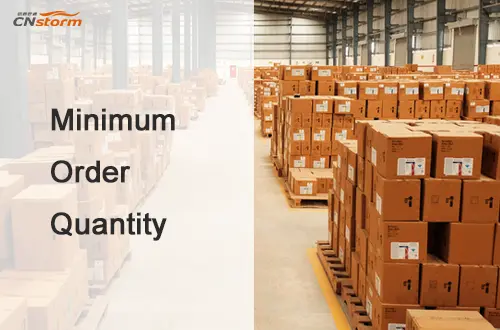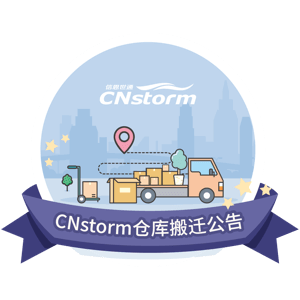Tags :
China sourcing agent
purchasing services
For companies and e-commerce sellers who want to purchase products from China, what to do when demand is lower than the factory's minimum order quantity
For overseas SMEs or e-commerce sellers who want to purchase products from China, the factory minimum order quantity (MOQ) is often a difficult threshold to cross. Many factories require a minimum order quantity (for example, 500 pieces), but start-ups or sellers who are trying to sell in small quantities may only need 100 pieces or even less. If you force yourself to meet the MOQ, you may face the risk of inventory backlog and capital chain rupture; if you give up purchasing, you will miss out on high-quality sources.
This article will explore this issue, analyze the core pain points and solutions for low-demand procurement, and introduce how to flexibly deal with MOQ restrictions through professional procurement agency services (such as Cnstorm), helping you complete global procurement at low cost and low risk.
Why do factories set MOQ? Understand the logic behind it
- Factory perspective: the rationality of MOQ
Production cost allocation: fixed costs such as startup fees, mold fees, and raw material procurement need to be diluted through mass production.
Optimization of production efficiency: Assembly line operations rely on large-scale orders, and small batches may reduce worker efficiency.
Quality control costs: Small orders require frequent switching of production lines, which increases the difficulty of quality control.

- Pain points of purchasers: The dilemma of small batch demand
Inventory backlog risk: When MOQ is much higher than the actual sales volume, unsalable inventory occupies funds and storage space.
High trial and error costs: The market feedback of new products is unknown, and large-scale purchases may lead to losses.
Slow supply chain response: Traditional factories are reluctant to adjust schedules for small orders, delaying the time to market.
Pros and cons of demand lower than the minimum order quantity
Pros:
Cost control: For start-ups or e-commerce sellers, the initial demand may not be large. Lower than the factory's minimum order quantity can avoid inventory backlogs and reduce capital occupation costs.
Risk reduction: Small batch purchases can reduce market risks, and if the product is unpopular, the loss is relatively small.
Disadvantages:
Increased costs: Factories usually charge higher unit prices for small batch orders to spread fixed costs. This may lead to higher procurement costs.
Increased difficulty in purchasing: Many factories are reluctant to accept small batch orders because it will reduce production efficiency and increase management costs.
Unstable supply chain: Small batch purchasing may lead to unstable supply chain and affect the continuous supply of products.
Solutions when demand is lower than MOQ
Communicate with customers: Communicate with customers in detail to understand their real needs and the reasons for low order quantity.
If it is a tentative order, you can try to discuss future long-term cooperation opportunities with customers to see if it is possible to increase the quantity in subsequent orders.
Negotiate with the factory: Communicate with the supply chain and production team to explore whether it is possible to flexibly allocate small batches in the existing production plan.
Check the existing order situation to see if other customers are also ordering similar products, and consider putting several small orders together to reach the minimum order quantity.
Find alternative suppliers: Find factories or traders willing to accept small batch orders, although they may be slightly higher in price, but more flexible.
Provide value-added services: Provide value-added services to customers, such as fast sample production, free design improvements, etc., to improve the total value experience of customers.
Consider long-term cooperation: Discuss the possibility of long-term cooperation with customers and promise to give certain price discounts or discounts when future orders increase.
Cnstorm's solution
Cnstorm is a professional procurement service provider dedicated to helping companies or e-commerce sellers purchase products from China and smoothly deliver goods to all parts of the world. In response to the problem that demand is lower than the factory's minimum order quantity, Cnstorm provides the following solutions:
Professional procurement service
Cnstorm has a professional procurement team that is familiar with the supply chain and factory conditions in the Chinese market and can provide customers with professional procurement suggestions and solutions. Through long-term cooperative relationships with many factories, Cnstorm can strive for more favorable prices and more flexible production arrangements for customers.
Logistics solution
Cnstorm provides comprehensive logistics solutions, including sea, air, express and other transportation methods, which can meet the different timeliness and cost requirements of customers. It has established long-term cooperative relationships with many international logistics companies and can provide customers with more favorable freight rates and more reliable logistics services.
One-stop service
Cnstorm provides one-stop services from procurement, quality inspection, packaging, transportation to customs clearance, saving customers worry and effort. The professional customer service team is always available to provide customers with consultation and support to ensure the smooth progress of the procurement process.
If you are still confused or unsure how to proceed, you can consider working with a professional procurement and logistics service provider. For example, Cnstorm provides one-stop procurement and logistics services to help you purchase products from China and ship the goods smoothly to the world. We have rich supplier resources and flexible logistics solutions to help you solve the minimum order quantity problem and optimize the procurement process.




 CN - Shenzhen Warehouse
CN - Shenzhen Warehouse








 Announcement of 2019 Spring Festival Holiday
Announcement of 2019 Spring Festival Holiday